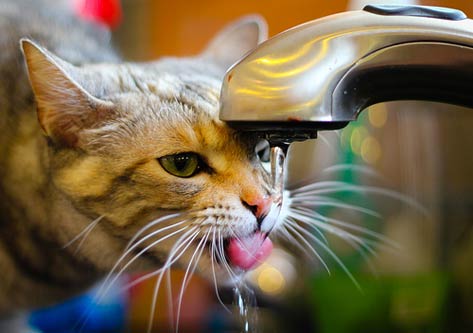Our scaly, legless friends are probably the most unfairly treated, and most morbidly loathed wild animals on planet earth. Of the 2,200-plus species of snakes existing, fewer than 20 percent can give you a poisonous bite. Folks have an uncontrollable fear of reptiles that stems back for 1000s of years. Maybe it came into existence as a natural safeguard, when there wasn’t a means of safely finding out if a snake was poisonous or the non-poisonous variety. In other areas of people’s lives, biblical literature has encouraged us to fear reptiles for an entirely alternative reason. Other people obviously don’t understand snakes, thinking that they are cold slimy creatures.
The premier to know about snakes is that a non poisonous reptile will only bite you for 1 of 3 circumstances. First, if you smell like food. If you have in the recent past been holding warm-blooded animals, like hamsters, rats, even kittens, the reptile could smell the odor on you and mistakenly think you for something it can eat. Secondly, if it mistakes you for a hunter that is trying to harm it. In particular when reaching down over a snake, the snake can misinterpret your arm as another animal wanting to eat it. Number three, and the most likely reason normally harmless snakes bite, is simply because they’re afraid. If it’s a choice between striking at you (the 5-6 foot tall giant that entered it’s living area) or running away as fast as it can crawl, it will choose move away every eventuality. However, if the snake senses it’s being trapped into a corner, or for whatever reason unable to conceal itself, it may strike out at you, which serves a warning to stop approaching than to actually do any damage.
Non-venomous snakes are usually very safe to pick up, especially pet reptiles and snakes that are habituated to being handled. Even the kinds of snakes in the wild that are not poisonous are perfectly able to be handled without fear of being bitten (the exception may be some water snakes and other kinds which are naturally aggressive). If you do need to handle a snake, be sure to move leisurely, and slide your fingers under the snake’s belly near it’s tail part. If you move fast, or from above, it may think you are a predator. After you have actually lifted the animal and are holding it, don’t grip it by the tail, but support it gently with both hands (keep a loose but firm grip, if you squeeze too hard it could injure the snake), and let the snake explore it’s way around arms and hands. If the snake appears ill at ease, or looks as though it might strike, it would be prudent to slowly, but carefully replace the snake in it’s box.
Of course, that reptiles are not nasty or slimy in any way. However if they get frightened, they might poop on you as a display of this anxiety. If this occurs, be sure to wash the skin thoroughly with soap and hot water, because reptiles can carry the bacteria of salmonella in their feces. You must also remember that reptiles, although wonderful and interesting to study, simply are not the brightest animals in the world, and have about the same thinking power as your average goldfish. Remember when you are handling a your pet that it probably perceives you as a really strange tree, and doesn’t recognize you as a human. Snakes react to their surroundings with instinct and not than thinking, and as long as you keep this in mind, being with snakes is a breeze, as well as being rewarding.
How can you tell venomous and non-venomous snakes apart? There are a few ways to tell, although some species of non-venomous snakes have evolved to be able to look like poisonous varieties if they are afraid. If you are ever even slightly in doubt, leave the snake alone! As a general rule, venomous reptiles have diamond or triangle shaped heads, and not like a head that looks rounded like most non-venomous reptiles have. Additionally, their eyes are in the shape of an ellipse like the eyes of a cat instead of having rounded eyes. Pit vipers have a telltale pit between the eye and the mouth. The pit, a heat-sensing organ, makes it possible for the snake to accurately strike a warm animal, even if the snake cannot see it. Every body knows that rattlesnakes usually rattle, but this is not always the fact. Some kinds of rattlesnakes have developed with no rattling mechanism!

 10 Tips for a Happy and Healthy Kitten
Getting a new kitten is one of the best things in the wo
10 Tips for a Happy and Healthy Kitten
Getting a new kitten is one of the best things in the wo
 Kidney Failure in Cats
There are a variety of causes to kid
Kidney Failure in Cats
There are a variety of causes to kid
 How Did My Cat Get Fleas and/or Ticks?
By Jennifer Kvamme, DVM
If you are a
How Did My Cat Get Fleas and/or Ticks?
By Jennifer Kvamme, DVM
If you are a
 10 Questions Every Pet Food Manufacturer Should Answer
By Vanessa Voltolina
Feel confident that your pet
10 Questions Every Pet Food Manufacturer Should Answer
By Vanessa Voltolina
Feel confident that your pet
 10 Tips for New Cat Owners
Important Things You Should Know B
10 Tips for New Cat Owners
Important Things You Should Know B